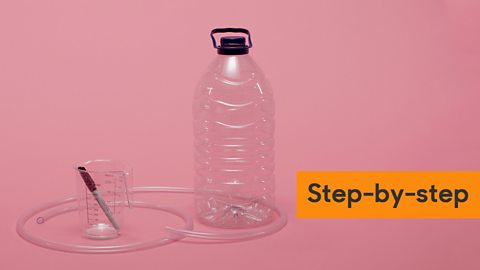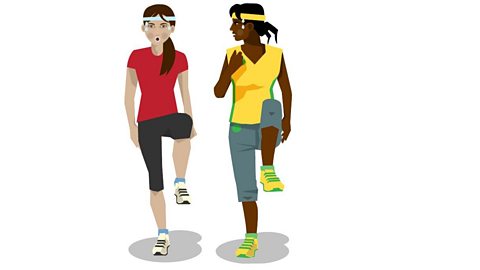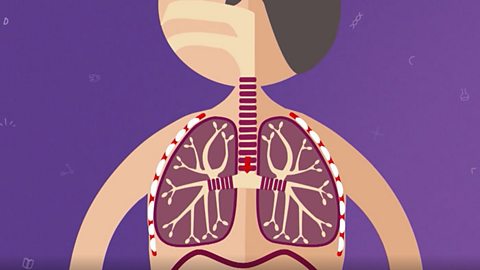Key points
- The maximum amount of air you can breathe in and out is your vital lung capacity. EverybodyÔÇÖs vital lung capacity is different depending on factors such as their age and fitness levels.
- When you breathe in and out, the air pressure inside our lungs changes, allowing oxygen to enter or carbon dioxide to leave.
- The larger your lung capacity the more oxygen can be breathed in and transported around the body.
Video - Lung capacity
We're going to look at how to measure your lung capacity. For this one, there's a good chance you'll get wet.
You will need a measuring jug, a length of plastic tubing, a big plastic bottle preferably over three litres, a permanent marker pen, then some water. Well, quite a lot of water, really. Like a sink full, or a bath full.
Measure out 200 millilitres of water in your jug and pour it into the plastic bottle. Mark 200 millilitres on the bottle. Pour in another 200 millilitres, mark the level again, keep doing that until you reach the top of the bottle. Sink the bottle in your bath, or whatever your water is in. Try to make sure the bottle is full of water with no air bubbles. Put the tube into the bottle and carefully turn the bottle upside down. The trick is to keep the neck of the bottle underwater, so that none of the water gets out. Take a deep breath and blow down the tube in one long breath, filling the bottle with the air from your lungs. Remember to keep hold of the bottle - if it floats away, it won't work.
Count all of the marks above the new water line in the bottle. Times that number by 200 to get your lungs vital capacity in millilitres. And there you have it. Now you can see the vital capacity of your lungs when you blow out. It's a lot, isn't it?
Why not challenge your family and friends to do the experiment and see who's got the biggest lung capacity? You can finally settle on which one of you is filled with most hot air.
Have a go

Image caption, Click to see a step-by-step slideshow.
Image caption, YOU WILL NEED: A measuring jug, a large plastic bottle, a pen and a length of rubber tubing.
Image caption, STEP 1 - Measure out 200 ml of water into the bottle and put a mark where it goes up to. Repeat until you get to the top of the bottle.
Image caption, STEP 2 - Place the now full bottle upside down into a container full of water. Without lifting the bottle out of the water, place the tube into the bottle.
Image caption, STEP 3 - Take a deep breath and blow into the tube.
Image caption, STEP 4 - Count how many lines the water lowered by and multiply by 200 ml. You have worked out your vital lung capacity!
1 of 6
What happens when we exhale?
- The muscles between the ribs relax allowing the rib cage to return to its resting position.
- The diaphragm relaxes and moves upwards.
- The volume inside the chest decreases.
- The pressure inside the chest increases and air is pushed out of the lungs through the mouth.
How can you increase your lung capacity?
You can increase your vital lung capacity by exercising regularly. A larger vital lung capacity means that more oxygen can enter into the body. Athletes train themselves to have a larger lung capacity than normal. This is to allow as much oxygen as possible to be transported to the cells in the body, increasing their performance.
Play the Atomic Labs game! gamePlay the Atomic Labs game!
Try out practical experiments in this KS3 science game.

More on Respiration and gas exchange
Find out more by working through a topic
- count2 of 13

- count3 of 13

- count4 of 13
